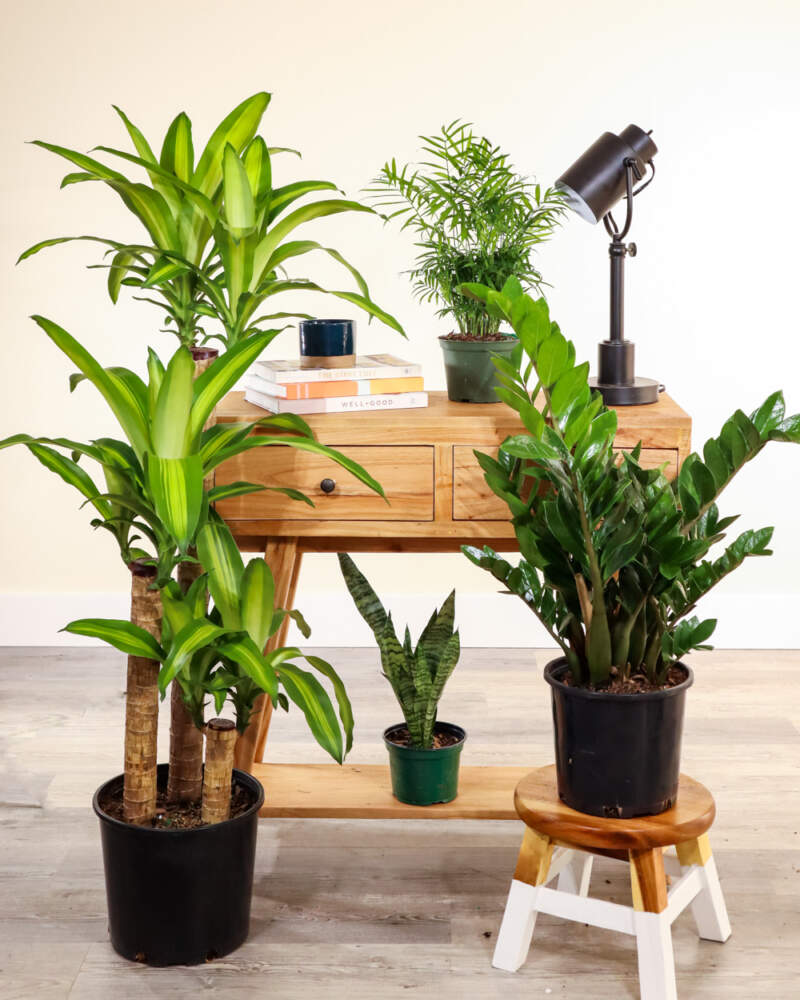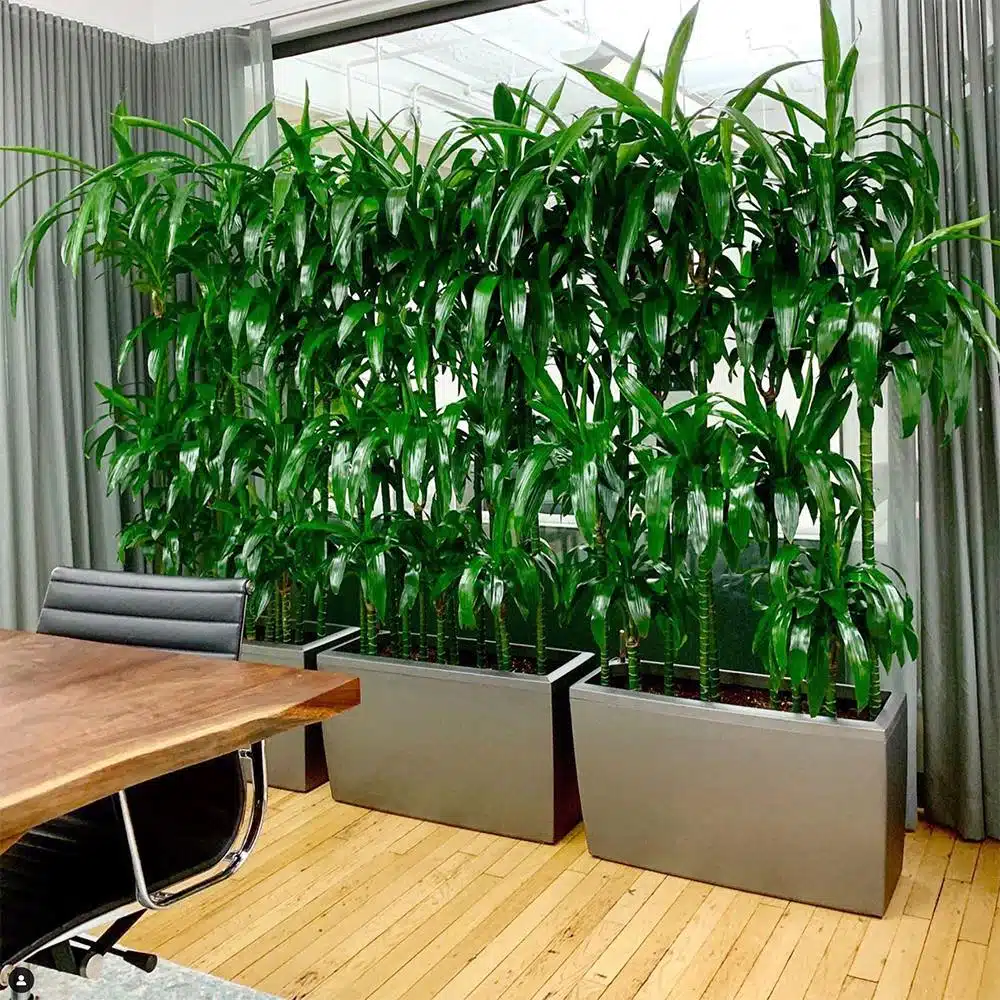How to Choose the Best Low-Light Indoor Plants for Your Interior Design Needs
Transform Your Home With Beautiful Low-Light Indoor Plants and Their Benefits
Incorporating low-light indoor plants right into your home can significantly improve both the ecological and aesthetic top quality of your space. These plants, which prosper in dim conditions, offer not just as attractive elements however additionally as natural air purifiers, making them suitable for metropolitan dwellers or those with restricted sunshine direct exposure. As we explore the various sorts of low-light plants and their benefits, you might locate surprising ways to integrate them right into your home that can transform your environments in means you might not have anticipated.
Benefits of Low-Light Plants
Low-light plants provide many benefits for interior atmospheres, making them an excellent option for both beginner and knowledgeable garden enthusiasts. Among the key benefits is their adaptability to low-light conditions, allowing individuals to enhance their home without the demand for extensive sunlight exposure. This characteristic makes them perfect for houses, offices, and other areas with limited natural light.

In addition, including low-light plants right into home decor can boost the visual allure of a room. Their rich vegetation and varied textures create a calming ambience, contributing to total health. Last but not least, the visibility of greenery has been linked to reduced stress degrees and boosted efficiency, making low-light plants a useful choice for boosting both psychological and physical health and wellness in indoor setups.
Top Low-Light Indoor Plants
While many interior plants thrive in brilliant light, several species are especially well-suited for low-light conditions, making them ideal for different interior spaces. One preferred choice is the Serpent Plant (Sansevieria), known for its striking upright leaves and strength, requiring marginal care. Another exceptional option is the Pothos (Epipremnum aureum), which includes heart-shaped fallen leaves and can route magnificently from shelves or wall mounts, growing in reduced light and including a rich touch.
The ZZ Plant (Zamioculcas zamiifolia) is celebrated for its glossy leaves and capacity to withstand disregard, making it best for busy lifestyles. In a similar way, the Peace Lily (Spathiphyllum) not just tolerates reduced light however likewise generates magnificent white flowers, enhancing any kind of room's visual.
For an unique touch, think about the Cast Iron Plant (Aspidistra elatior), which undoubtedly meets its name, flourishing in the darkest corners of your home. The Chinese Evergreen (Aglaonema) offers a variety of leaf patterns and shades while being exceptionally forgiving in low-light problems. These plants not just improve interior settings yet likewise add to air filtration, boosting your space.
Treatment Tips for Low-Light Plants

Watering methods are crucial; these plants typically like a little completely dry problems. Overwatering can lead to root rot, so make sure that the leading inch of dirt is completely dry prior to sprinkling once more. Usage pots with drain holes to allow excess moisture to leave.
Humidity is another essential element. Lots of low-light plants, such as ferns and tranquility lilies, take advantage of higher humidity levels. To increase humidity, consider misting the fallen leaves or placing a tray of water near the plants.
Fertilizing needs to be come close to with care. Throughout the growing season, use a diluted, balanced fluid plant food on a monthly basis to sustain development, however avoid feeding throughout the inactive winter season months.

Innovative Ways to Present Plants
Interior plants can offer as exciting prime focus in any type of space, boosting both visual appeal and ambiance. Creative screens can boost the aesthetic impact of low-light plants, making them an essential part of your home design. One efficient approach is to make use of tiered plant stands, which allow you to showcase several plants at differing elevations while maximizing floor space.
Hanging planters are another innovative alternative, creating a feeling of deepness and attracting the eye up. Consider macramé hangers or wall-mounted shelves to introduce a special appearance and More hints design.
For a much more organized technique, use geometric terrariums or glass containers to house your plants, including a modern touch to your interior yard. You can additionally repurpose classic products, such as teacups or wooden cages, for an eclectic display screen that mirrors your individuality.
Enhancing Home Atmosphere With Plants
Integrating low-light plants into your home not only improves visual appeal but additionally adds significantly to the overall index ambiance. These plants function as all-natural design elements, presenting a feeling of peace that can change any type of room. The visibility of plant fosters a calming ambience, which is specifically beneficial in high-stress settings such as office or living spaces.
Low-light plants, such as serpent plants, pothos, and ZZ plants, are not only aesthetically pleasing yet likewise improve indoor air top quality by filtering system pollutants. This twin function boosts the atmosphere even more, developing a much healthier space (Best low-light indoor plants). The tactical positioning of these plants can likewise affect the understanding of room; for circumstances, high plants can attract the eye up, making ceilings appear greater and rooms a lot more spacious
In addition, varying appearances and colors of foliage include depth to indoor layout, permitting imaginative expression in home styling. Whether put on shelves, in corners, or as centerpieces, low-light plants can raise the state of mind of any type of room. In summary, integrating these plants right into your home is an efficient means to foster a warm, inviting ambience while reaping the benefits of boosted air quality and aesthetic convenience.
Conclusion
Including low-light interior plants right into home atmospheres supplies various benefits, consisting view of improved visual charm and improved air high quality. These resistant plants, such as the Snake Plant and Peace Lily, need very little light and maintenance, making them ideal for varied lifestyles. Their ability to filter contaminants adds to a much healthier space, while their varied appearances and colors enhance indoor style (Best low-light indoor plants). Inevitably, the inclusion of low-light plants fosters a peaceful and inviting ambiance, transforming any type of home into a relaxing sanctuary.
While lots of indoor plants thrive in bright light, numerous varieties are specifically fit for low-light problems, making them suitable for different indoor rooms. One reliable technique is to utilize tiered plant stands, which allow you to showcase numerous plants at differing heights while making best use of flooring room.
Low-light plants, such as serpent plants, pothos, and ZZ plants, are not only aesthetically pleasing but additionally enhance indoor air quality by filtering system contaminants. Best low-light indoor plants. The calculated placement of these plants can also affect the understanding of space; for circumstances, tall plants can attract the eye upwards, making ceilings appear higher and areas a lot more roomy
These resilient plants, such as the Serpent Plant and Peace Lily, call for very little light and maintenance, making them suitable for varied way of lives.